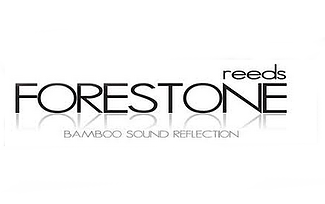Manifesto #2: The synthetic reed revolution or marginal phenomenon?
Published : 2018-05-29 16:12:23
Categories : ,
The "Reed Box Manifestatoes" series are periodic publications of opinion on the essential issues of our profession at the confluence of wind instruments and e-commerce.
The second part deals with a subject that divides saxophonists and clarinetists: the synthetic reed
A La Boîte à Reches, we offer our saxophonists and clarinetists synthetic reeds of the brands Bari, Legere, Fibracell and Forestone to which we can add the Plasticover range from Rico D'Addario which offers a cane reed covered with plastic.
What is the composition of the synthetic reed?
In a form comparable to the cane reed, a reed is said to be synthetic if it is manufactured totally or partially from synthetic materials:
Model | Composition / Material |
| Bamboo fiber (50%); Carbon (50%) | |
Polypropylene | |
Avilar | |
Aramids and resin fibers | |
Plastic-coated reed |
It is the result of research and development aimed at obtaining a reed that has a vibration capacity similar to that of cane reeds. The manufacturers of these reeds are generally American and Japanese companies.
How does the synthetic reed compare to the cane reed?
For the moment, and despite significant qualitative progress in recent years, the synthetic reed has still not succeeded in dislodging the cane reed in the esteem of the majority of musicians.
The synthetic reed has undeniable advantages
Indeed, its durability is way better than that of the cane reed. All musicians will tell you, finding the right reed is not easy, the most demanding of them will say that on a box of ten reeds less than half are playable and only one or two can give them complete satisfaction! Therefore, once they have found the right reed, they keep it carefully and are in a permanent dilemma because on the one hand they want to enjoy it as much as possible but are also aware of its limited lifespan, which will mean that by playing it, they will end up consuming it. This handicap is less true for the synthetic reed, which has a much longer lifespan, so that some musicians, especially concertists, once they have found the cane reed that satisfies them, keep it carefully for their concert and use the synthetic reed to rehearse.
.... but not only
However, the synthetic reed has not convinced some "purists" who claim that the sound remains generally lower than that of the cane reeds because according to them it does not have the ability to transcribe all the nuances of their playing. This could be explained by the fibrous structure of the cane reed, which gives it an inimitable elasticity. In addition, some musicians particularly like to refine the cut of their reed using reed trimmers, something to which the synthetic reed does not lend itself. The problem of price is also not to be neglected, any unfortunate incident that would crack a synthetic reed would represent a more significant financial loss than for a cane reed.
Finally, the discovery of the saxophone or clarinet is generally made with a cane reed, the subsequent change to the synthetic reed will require from the musician a adaptation period due to the difference in mouthfeel. This adaptation may nevertheless be a barrier to the eyes of a number of saxophonists and clarinetists who will be more reluctant to adopt the synthetic reed.
Do we need to consider intermediate solutions?
In order to reconcile the advantages of the cane reeds and the synthetic reeds, some manufacturers have created a so-called "composite" reed that combines a fibrous structure found in the cane reed with synthetic materials. It will therefore have the durability of the synthetic reed and the sound quality of the cane reed and will represent a less important change for any musician when switching from cane to synthetic.

